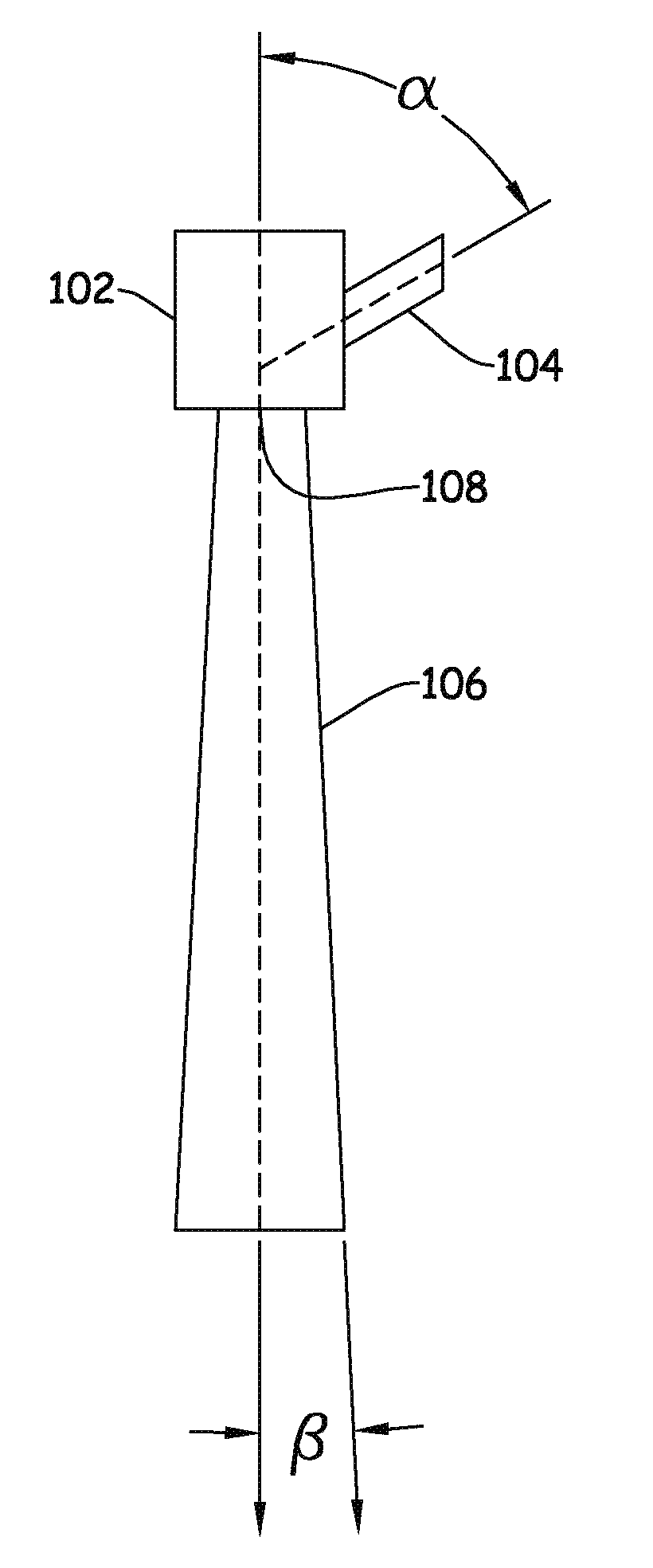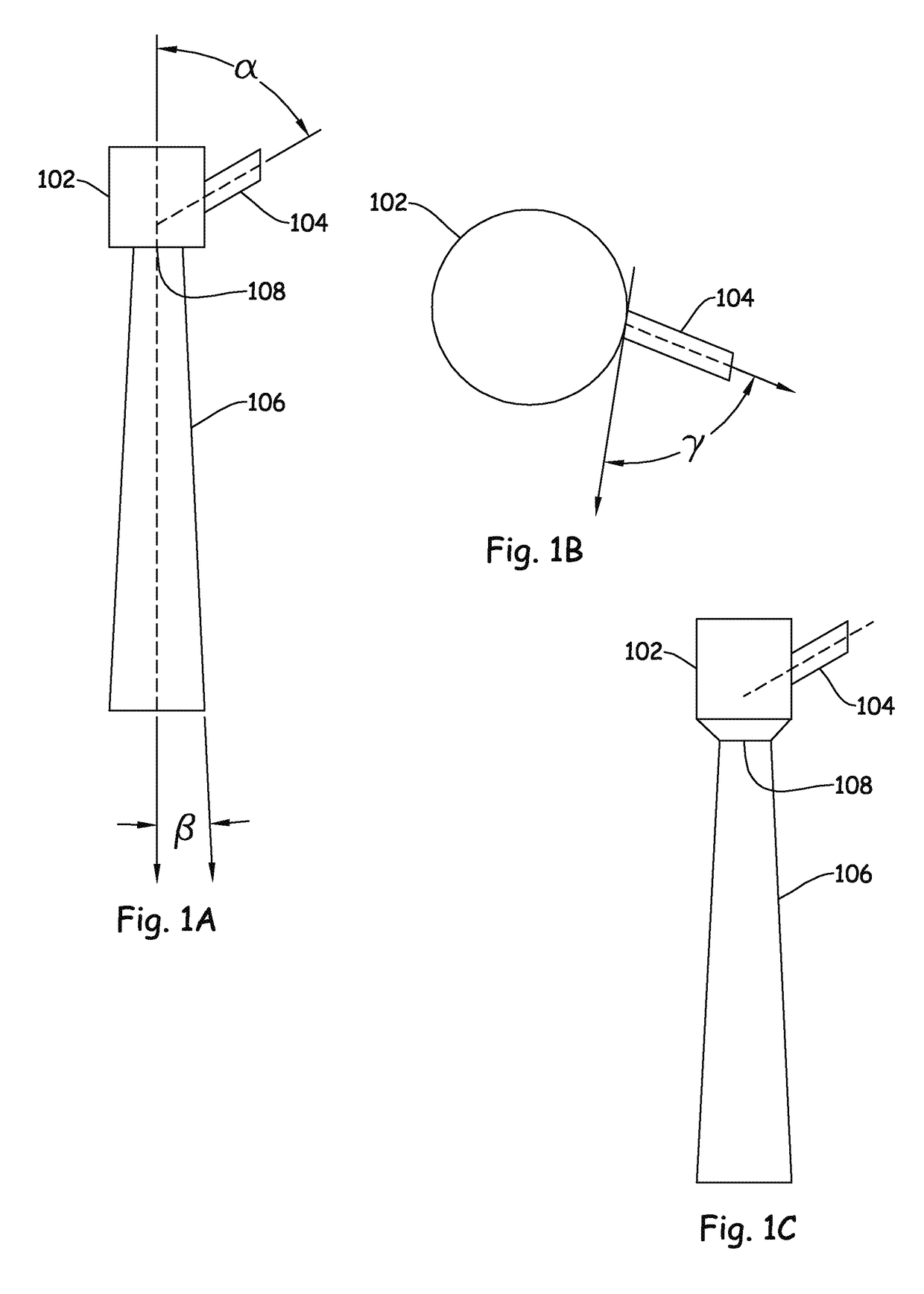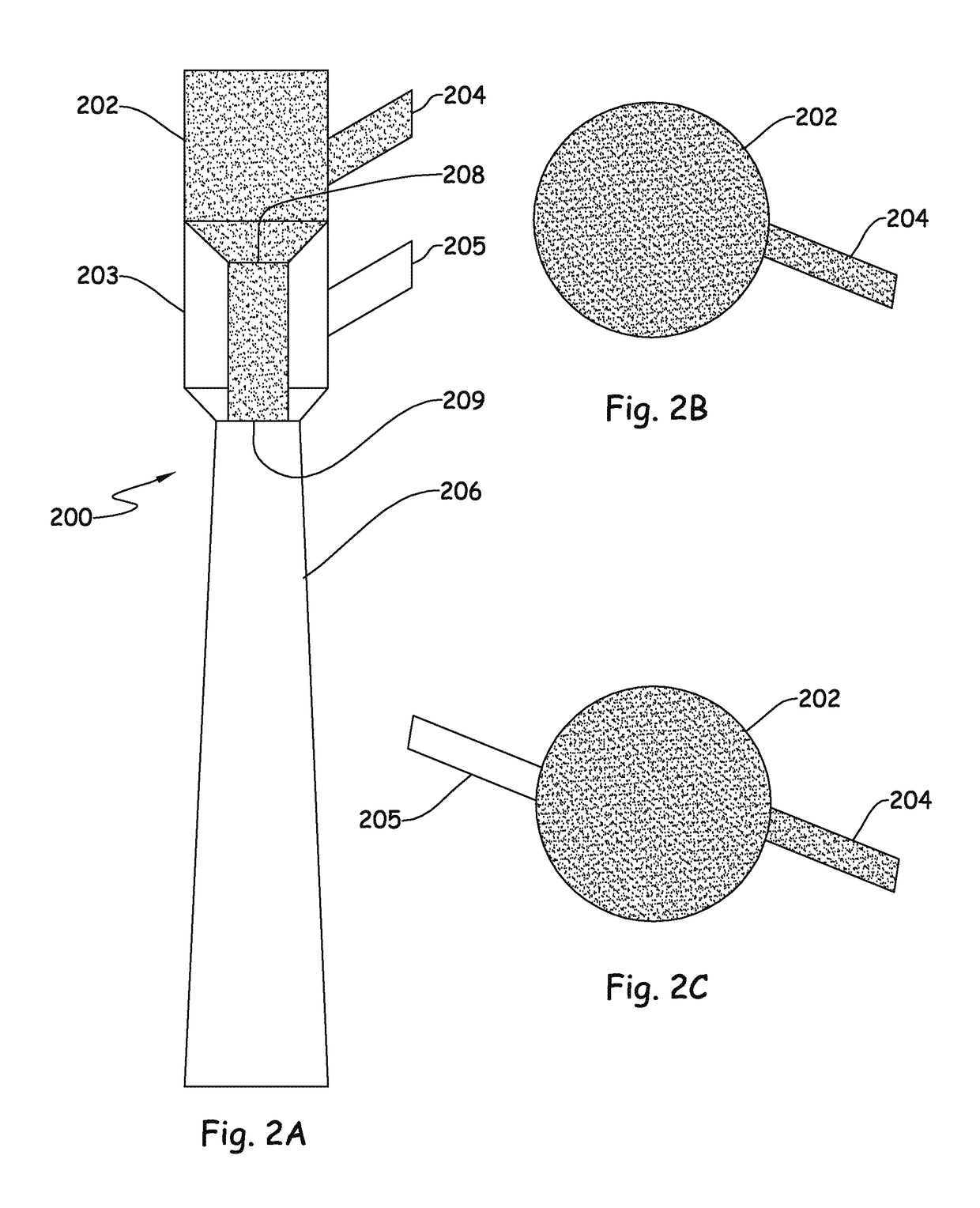Mixer and processes incorporating the same
a technology of mixing machine and process, applied in the direction of mixing, transportation and packaging, chemistry apparatus and processes, etc., can solve the problems of large quantity of secondary products, high cost, and limited commercial availability of many chlorinated propenes, and achieve time and cost savings
- Summary
- Abstract
- Description
- Claims
- Application Information
AI Technical Summary
Benefits of technology
Problems solved by technology
Method used
Image
Examples
example 1
[0072]FIGS. 5A and 5B shows two mixers designed to provide a swirling flow pattern to the reactants provided thereto. In both embodiments, mixer 500 incorporates angle α of 45°, angle β of 7°, and angle γ of 60°. The flow rate of the reactant provided via inlet 504, methyl chloride, is 215.4 kg / hr, while the flow rates of the reactant mixture provided via inlet 505 in the embodiment of mixer 500 shown in FIG. 5A, carbon tetrachloride and perchloroethylene, are 236.5 kg / hr and 10.2 kg / hr, respectively. In the embodiment of mixer 500 shown in FIG. 5B, the reactant mixture provided via inlet 505 in FIG. 5A is provided via an injection port (not shown) in FIG. 5B upstream of the flow pattern development zone. The inner diameter of the outermost chamber outlet (Dco), the outermost tube of the flow pattern development zone, and the mixing zone is 1.5″. The flow development zone length (Lfpd) is 8 inches and the mixing zone (Lm) is 12 inches.
[0073]The results of a computational fluid dynam...
PUM
| Property | Measurement | Unit |
|---|---|---|
| inlet angle | aaaaa | aaaaa |
| inlet angle | aaaaa | aaaaa |
| expander angle | aaaaa | aaaaa |
Abstract
Description
Claims
Application Information
 Login to View More
Login to View More - R&D
- Intellectual Property
- Life Sciences
- Materials
- Tech Scout
- Unparalleled Data Quality
- Higher Quality Content
- 60% Fewer Hallucinations
Browse by: Latest US Patents, China's latest patents, Technical Efficacy Thesaurus, Application Domain, Technology Topic, Popular Technical Reports.
© 2025 PatSnap. All rights reserved.Legal|Privacy policy|Modern Slavery Act Transparency Statement|Sitemap|About US| Contact US: help@patsnap.com



